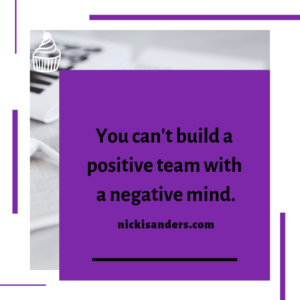Harvard Research Reveals How Mindful Leaders Develop Better Companies and Happier Employees
By Marissa LevinFounder and CEO, Successful Culture
Mindfulness is proven to help leaders manage their stress, which reduces employee stress, creates a better workplace, and improves the bottom line.
A recent study revealed that when leaders are stressed, their anxiety can be felt across the entire organization, often to the point where good employees will walk away from a job to save their own health. Only 7 percent of employees surveyed believe that their stressed leaders effectively lead their teams, and only 11 percent of employees with stressed leaders are highly engaged at work.
The study also found that when leaders fail to manage their stress in a constructive way, more than 50 percent of their employees perceive their leader as harmful or ineffective. Further when leaders are unable to manage stress, employees lose their drive to advance within the company.
One of the most effective ways to manage stress is mindfulness. When leaders actively engage in mindfulness practices, the “psychological capital” of an organization rises.
There are 4 components of psychological capital:
- Hope: “A positive motivational state that is based on an interactively derived sense of successful agency (goal-directed energy) and pathways (planning to meet goals)”, according to Positive Psychology expert Rick Snyder
- Optimism: Expecting good things to come, and “reacting to problems with a sense of confidence and high personal ability” according to Positive Psychology expert Martin Seligman
- Self-efficacy: “Task-specific self-confidence, the belief that you are able to accomplish something effectively,” according to psychologist Albert Bandura
- Resilience: “The ability to bounce back and beyond when faced with adversity,” according to resilience expert Ann Masten
How the leaders of an organization
manage their own stress directly impacts the levels of these 4
components.
How Mindful Leaders Think
Mindful leaders have mastered 2 specific ways of processing:
- They are able to personally separate themselves from stressful events. They learn to not take organizational threats personally, and are able to observe situations from a neutral position, rather then becoming personally engaged.
- They are able to control their reactions to threats or difficult situations so that they can process their options, rather than reacting without thinking.
Harvard Business Review research identified 3 specific areas of mastery that allow leaders to be more present, more thoughtful in their organizational choices, and more aware of everything going on around them.
The three areas are:
- Metacognition. This is the ability to take a step back to observe at a distance what is happening around you. By doing so, you become more aware of your own reactions to situations. “Without metacognition, there is no means of escaping our automatic pilot,” says HBR researchers Megan Reitz and Michael Chaskalson.
- Allowing. This refers to being open to what is happening without judgment or yourself or anyone else. “Without allowing, our criticism of ourselves and others crushes our ability to observe what is really happening,” observes Reitz and Chaskalson.
- Curiosity. The most effective leaders have a strong sense of curiosity, and are open to learning more about all situations. They embrace the opportunity to gather as much information as possible before making any decisions. “Without curiosity, we have no impetus for bringing our awareness into the present moment and staying with it.”
Becoming a Mindful Leader
The first step to becoming a mindful leader is to develop self-awareness. We cannot change what we don’t know. Leaders can raise their own mindfulness by paying attention to how they are showing up with people and within situations at work.
Once we become aware of how we are reacting and engaging, we can make a plan to improve our awareness and presence. One of the easiest changes we can make starts with our breath. A 5-minute breathing exercise every day will diffuse reactions and emotions.
In addition to become aware of our breath, there are many other tactics leaders can use daily to increase mindfulness:
- Checking ourselves emotionally before we enter a room or a meeting
- Taking a walk specifically to pause and re-center, also known as “walking meditation”
- Scheduling in downtime to recharge
Integrating mindfulness into our daily lives is often easier said then done. Neuroscience expert Christine Comaford shares several strategies for slowly adapting this lifestyle.
The Emotional Energy Starts at the Top
Creating a healthy, emotionally safe work environment has never been more important. As with everything else in a company, this initiative starts at the top. Leaders must remember they are always being watched.
What does your emotional presence tell your employees about you and the company?
